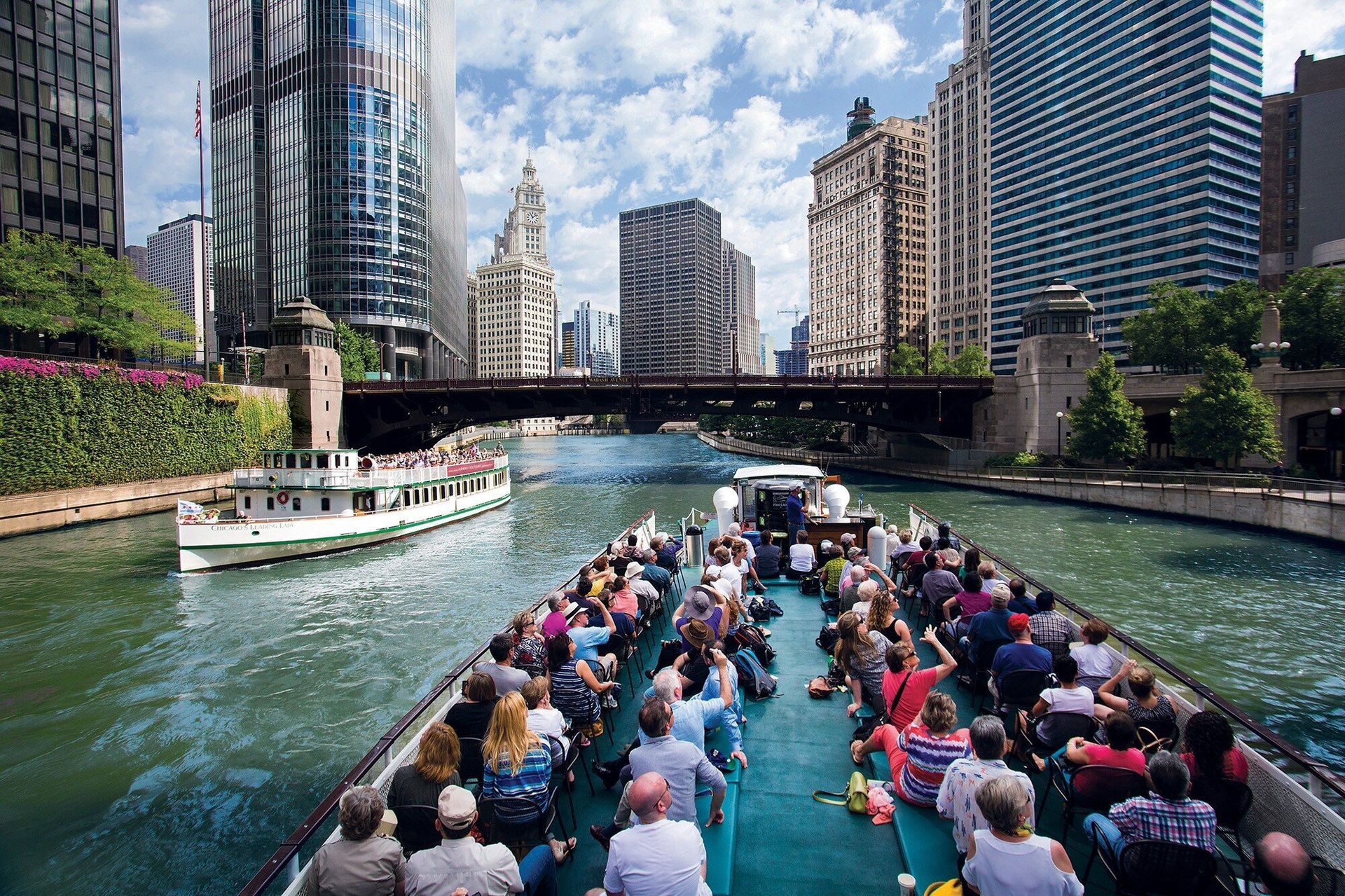
The Chicago River: A transformation
The story of the Chicago River is one that continues to unfold. Through periods of industry, transportation, revitalization and recreation, it has grown and changed like the city itself.
The story of the Chicago River is one that continues to unfold. Through periods of industry, transportation, revitalization and recreation, it has grown and changed like the city itself.
It’s easy to forget that the Chicago River wasn’t always a place for play. Today it’s filled with CAC river cruises, water taxis, tourists exploring the inner workings of a bascule bridge, kayakers watching fireworks and people taking lunch breaks along the Riverwalk. But in 1860, William McCormick—brother of Cyrus McCormick, the founder of what would become International Harvester—described the river as “positively red with blood.”
The mid-19th-century river that the McCormick family knew was primarily a working river. It was a river busy with grain elevators, swing bridges and schooners ferrying lumber from the northern woods of Michigan.
It was a river that functioned as our city’s sewer—probably not our brightest idea.
But the river has changed drastically over the past 150 years. Like the city itself, the story of our river has been one of development and growth, calamity and disaster, revitalization and renewal.
REVERSING THE FLOW OF THE CHICAGO RIVER
The most dramatic change happened just after midnight on January 2, 1900. The Sanitary District of Chicago blew up a temporary dam opening the Sanitary and Ship Canal and reversed the flow of the Chicago River.
Though the canal’s creation was one of the most important contributors to Chicago’s prosperity, it also led to challenges we still grapple with today. It ensures public health by sending wastewater away from Lake Michigan, the city’s source of drinking water. But it also sends fresh water, our most precious resource, out of the Great Lakes watershed. The interconnected waterways also provide a path for invasive species like Asian carp to enter the Great Lakes.
WHAT’S NEXT FOR CHICAGO’S RIVER?
Chicago has had a complicated relationship with its river. Over the past 400 years, we’ve tried to navigate it, defend it, profit from it and control it. At times, we’ve even abused and neglected it.
But looking forward, we see many planned projects that might begin to solve challenges facing our neighborhoods and the region as a whole. We’re also excited for more opportunities to enjoy our river as a place for relaxation and recreation.
- Boathouses along the north and south branches host kayakers, cyclists and others looking for a place to play.
- Riverfront trails link neighborhood parks.
- A reimagined river’s edge in Pilsen and South Roscoe Village will transform the currently unwelcoming shoreline.
- An expanded Riverwalk along the banks of the main stem of the Chicago River creates more space for outdoor activities.
At work or at play, the Chicago River remains a powerful force of nature. Today, it increasingly mirrors regional goals to plan for and create a city that is more green, more sustainable and more globally connected.
Essay adapted from Lynn Osmond’s Foreword which originally appeared in Chicago’s River at Work and at Play, Neal Samors and Steven Dahlman (Chicago’s Books Press, 2014)
